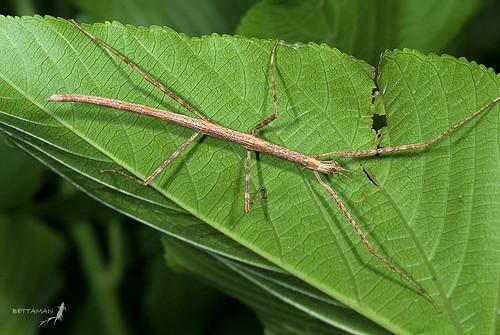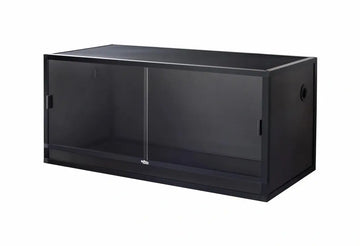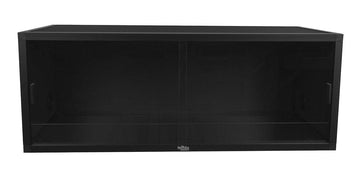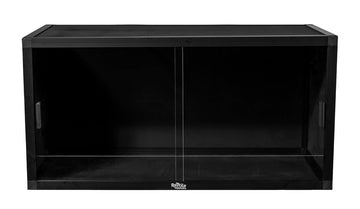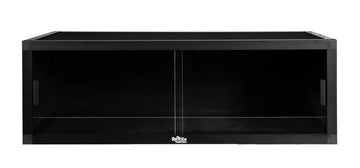Pink wing stick insects (Sipyloidea sipylus) are 3-4” long, nocturnal, herbivorous invertebrates native to Madagascar. They are also known as Madagascan stick insects.
Pink wing stick insects have a slender body that looks almost identical to a stick, especially when they tuck in their legs. Coloring is generally light brown/beige, with large, striking pink wings.
Pink wing stick insects are among the most popular pet stick insects, and are widely known as being very easy to care for. Total lifespan is generally around 1.5 years.
Pink wing stick insects are parthenogenic, which means that they can reproduce without a male present. Given that most pink wing stick insects in the trade are female, your pet will lay viable eggs during its lifespan. This means that it’s very important to destroy these eggs if you intend to dispose of them — otherwise you may accidentally create an invasive population of them in your area!
Minimum terrarium size for pink wing stick insects
The widely-accepted minimum formula for housing stick insects is:
- Length = 2x length
- Width = 2x length
- Height = 3x length
Height is particularly important, as stick insects need vertical space in order to molt (shed their exoskeleton) and grow properly. Using the above formula, the enclosure for an adult-sized pink wing stick insect should be at least 8”L x 8”W x 12”H and made of glass, plastic, or mesh.
Pink wing stick insects generally get along when housed together in groups. However, keep in mind that if you want to keep more of them in the same enclosure, you will need a bigger enclosure — particularly along the horizontal dimensions.
Do pink wing stick insects need special lighting?
If your stick insect’s enclosure is placed in a room that receives ~12 hours/day of bright natural or artificial light, then additional lighting equipment is unnecessary. However, if your pet is being kept in a dark room or you wish to put live plants in the enclosure, then you will need additional lighting equipment such as a small white fluorescent or LED grow light around 6500K color temperature.
Best temperature for pink wing stick insects
Pink wing stick insects do best when they are kept between 64-79°F. This includes room temperature, so supplementary heating should not be required for keeping this species. However, make sure you have a way to keep the room cool if it tends to get excessively warm during summer.
The best way to keep track of the temperatures inside your stick insect’s enclosure is with a digital thermometer placed in the middle of the enclosure.
Best humidity levels for pink wing stick insects
Providing the right amount of humidity is very important for making sure that your stick insect is able to molt properly and stays generally healthy. Pink wing stick insects generally prefer humidity levels around 50-70%, with higher humidity at night and lower during the day. Humidity levels should be measured with a digital hygrometer, with the probe placed in the middle of the enclosure.
Just make sure to lightly mist your pet’s enclosure every evening with a spray bottle to both increase the humidity and provide drinking water. It’s best to use distilled water rather than tap water, unless it has been treated to remove chlorine.
Best substrate for pink wing stick insects
Your pink wing stick insect terrarium should have at least 1-2” of substrate on the bottom to help maintain consistent humidity levels. Here are some moisture-friendly materials you can use:
- Zoo Med Creatures Eco Soil
- Zoo Med Creature Soil
- Zoo Med ReptiBark
- Eco Earth Plantation Soil
- Exo Terra Forest Bark
This substrate will need to be replaced weekly and the enclosure thoroughly rinsed out with hot water to maintain good hygiene.
How to decorate a pink wing stick insect terrarium
In order to reduce stress, prolong your pet’s lifespan, and encourage natural behaviors, your pink wing stick insect needs both objects to climb and hide behind in its enclosure. Here are some ideas of things you can use:
- cork logs/flats
- twigs
- thin vines
- artificial foliage
Use hot glue to attach climbing objects to the sides and bottom of the enclosure at different angles for variety. However you arrange your enclosure, make sure to leave enough open space at the top for twice your pet’s height to use during molting.
What to feed to a pink wing stick insect
Stick insects are herbivores, which means that they eat plants to get the nutrition that they need. Make sure a branch of fresh leaves is always available. You can stick this branch in a vase of water to keep the leaves fresh for longer!
Here are some options for leaves that are appropriate to feed to a pink wing stick insect:
- Blackberry (older leaves only, no new leaves)
- Raspberry
- Oak
- Hawthorn
- Hazel
- Elm
- Maple
- Beech
- Birch
- Alder
- Mountain ash
- Rhododendron
- Geranium
- Buddleia
Oak leaves freeze well for use during winter, and blackberry leaves usually stay available through the winter as well. Romaine lettuce may be offered if you have nothing better on hand. Try to feed your stick insect as wide of a variety of plants as possible for more balanced nutrition.
Never source leaves from garden centers or florists, as these are likely to be covered in chemicals that will harm your pet! Also beware of collecting leaves from plants located near roadways, where they may be contaminated with chemicals from vehicle exhaust.
How to handle your pink wing stick insect
As a general rule, invertebrates are “look-but-don’t-touch” pets: fun to watch, but not to be handled regularly. However, pink wing stick insects can be handled if you are gentle.
To pick up your pet, place a hand under its front legs, then use your other hand to coax it forward from behind. Be very gentle as you do this, as it’s easy to injure a stick insect. Let it step onto your hand of its own accord, and don’t force it!
If you surprise your pink wing stick insect, it may fly away. This is normal defensive behavior, but best discouraged to prevent injury or escape.
*This care sheet contains only very basic information. Although it’s a good introduction, please further your research with high-quality sources. The more you know, the better you will be able to care for your pet!
"070730 台東 綠島 棉桿竹節蟲 Sipyloidea sipylus (Westwood, 1859)" by Bettaman is licensed under CC BY-NC-SA 2.0

